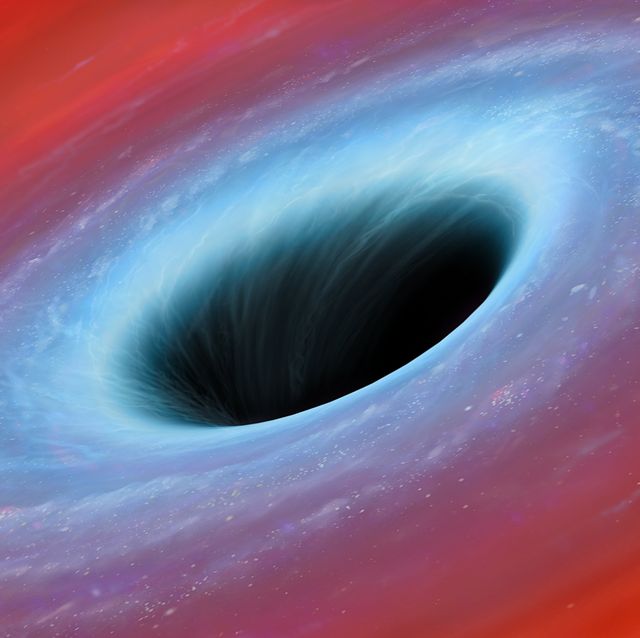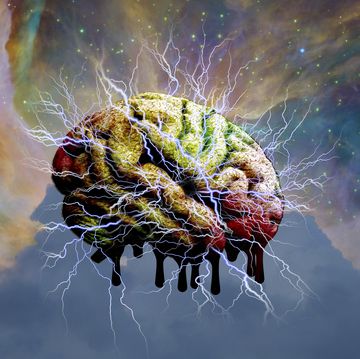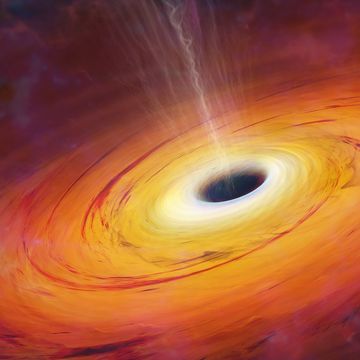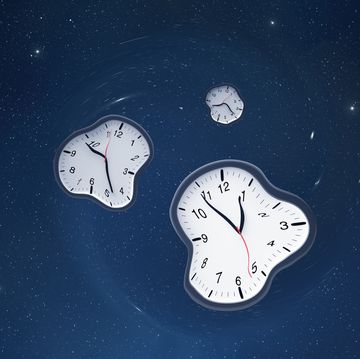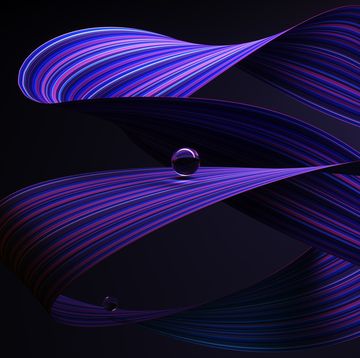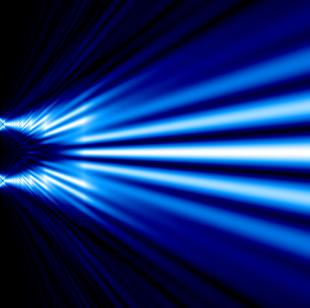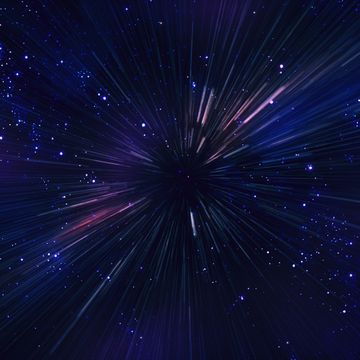- Astronomers have located the closest stellar-mass black hole to Earth ever discovered.
- Because this black hole isn’t feeding on matter and shooting out radiation, making it pretty much invisible, scientists had to take a different approach to find it.
- A star orbiting the black hole exhibited a “wobble,” which helped them locate the black hole-star binary system Gaia BH1.
What would you get if you took the solar system and put a black hole where the sun is and placed the sun where Earth sits? The answer is something like the newly discovered black hole-star binary system Gaia BH1, which contains the closest stellar-mass black hole to Earth ever discovered and a star orbiting it at an incredible 223,000 miles per hour.
“That’s because while the black hole is about ten times the mass of the sun, the star that orbits it is very similar to the sun and has an orbital period of about half a year,” Kareem El-Badry, an astrophysicist at the Center for Astrophysics at the Harvard/Smithsonian Center for Astrophysics and the Max Planck Institute for Astronomy, tells Popular Mechanics. This similarity to the solar system extends to the separation between the black hole and its companion star, which is about one-and-a-half times the separation between Earth and the sun.
New research on this first unambiguous detection of a stellar-mass black hole in the Milky Way—which, notably, isn’t feeding on matter and blasting out radiation—was published in the journal Monthly Notices of the Royal Astronomical Society in November. Astronomers describe these non-feeding black holes as dormant, and they’re tough to spot because any light that comes too close to them is trapped behind a light-capturing boundary called the event horizon, yielding them invisible.
That means even though there are estimated to be millions of stellar-mass black holes, with masses between three and ten times that of the sun, the few that have been detected thus far have been snacking on material from a companion star. When this stellar matter falls toward a black hole, it’s superheated. That causes it to emit powerful radiation that can be used to detect the feeding black hole. So, how did scientists manage to find a black hole without an appetite?
Detecting a Wobble
To discover this dormant black hole in the absence of such emissions, El-Badry and his team used the effect that the black hole has on the star that orbits it to infer its presence.
Looking through data from the Gaia space telescope, which has been creating a 3D map of the Milky Way since 2013, the astronomers saw that the star in Gaia BH1 was demonstrating a tell-tale “wobble.”
“Gaia is very precisely measuring the positions of all the stars in the sky relative to a fixed background at different times, so one of the things you can do with that data is look for stars that are wobbling,” El-Badry says. “What we learned about this system is the star is wobbling more than you would expect for any star with a normal companion.”
Concluding the gravitational influence of a massive compact object caused the wobble, the astronomers performed follow-up observations with the Gemini Multi-Object Spectrograph instrument on the Gemini North Telescope.
This allowed them to measure the rapid velocity of the companion star as it orbits the black hole, and confirmed the masses of the two objects, cementing the theory that the central object of Gaia BH1 is a stellar-mass black hole.
“When we look with images and spectra, we don’t see anything else there that’s luminous, so we can rule out basically all possibilities that aren’t a black hole,” El-Badry says. “We don’t actually detect the black hole at all. We just see an enormous source of mass contributing no light.”
This newly discovered black hole of Gaia BH1 won’t always be dormant or invisible, however.
Ending the Fast
El-Badry says that when the orbiting star reaches the end of its hydrogen-burning phase, its core will collapse and its outer layers will puff out. That will allow the central black hole to start stripping away this swelled outer material from its companion, which it will begin to feed on, heating it and making its presence known with luminous emissions.
“Gaia BH1 is very stable for now, but it is doomed,” El-Badry adds. “The black hole will eventually be something like a million times as bright as the sun whereas now it’s basically totally dark.”
The black hole in Gaia BH1 once experienced a red supergiant phase itself and this represents a mystery for astronomers. This is because to leave the black hole detected today, the progenitor star must have possessed around 20 times the mass of the sun. At that size during the red supergiant phase, the black hole’s outer layers should have swelled up to where the sun-like star orbits it today.
That means it’s difficult to explain how the companion star survived so close to the birthing process of the black hole without being irrevocably changed or swallowed entirely. And that means Gaia BH1 could change how we think about the evolution of binary systems.
“The Gaia BH1 system is not really one that we would have predicted to exist,” El-Badry says.
The Black Hole Police
For El-Badry, the discovery of the closest black hole to Earth is particularly pleasing. This is because the astrophysicist has inadvertently become part of a crew of researchers that are more accustomed to debunking local stellar-mass black holes. This has led to them being affectionately called the “black hole police” in astronomy circles.
“I didn’t get into the game planning to ‘debunk’ black holes, I was just looking for them and just happened to find different interpretations for black holes others had suggested,” El-Badry explains. “It’s definitely exciting to find one and be able to study it. It feels good to be on the other side of the coin.”
El-Badry expects this discovery will be scrutinized as closely as he and his colleagues have looked at other suspected black holes, but is confident that the nature of Gaia BH1 will just be confirmed by follow-ups. In fact, El-Badry points out that a separate paper authored by a separate research team has reached very similar conclusions regarding Gaia BH1.
The system’s central object could still lose its status as the closest stellar-mass black hole to Earth, however. If the technique El-Badry and the team used to find it is successfully adapted to search for other similar systems containing black holes in the Milky Way, it could lead to the discovery of some that are even closer to home.
“The satellite Gaia that provided the data we used to make this discovery is continuing to take data, and the longer it takes data, the more accurate or the more useful data becomes for this kind of detection,” El-Badry says. “We estimate that in the Milky Way there are something like 40,000 of these normal-star-plus-black-hole binaries and by the end of its mission in five years, Gaia will find dozens of these.”
“Of course, that means there are many more that Gaia won’t find, but are still out there,” he concludes.
Robert Lea is a freelance science journalist focusing on space, astronomy, and physics. Rob’s articles have been published in Newsweek, Space, Live Science, Astronomy magazine and New Scientist. He lives in the North West of England with too many cats and comic books.
